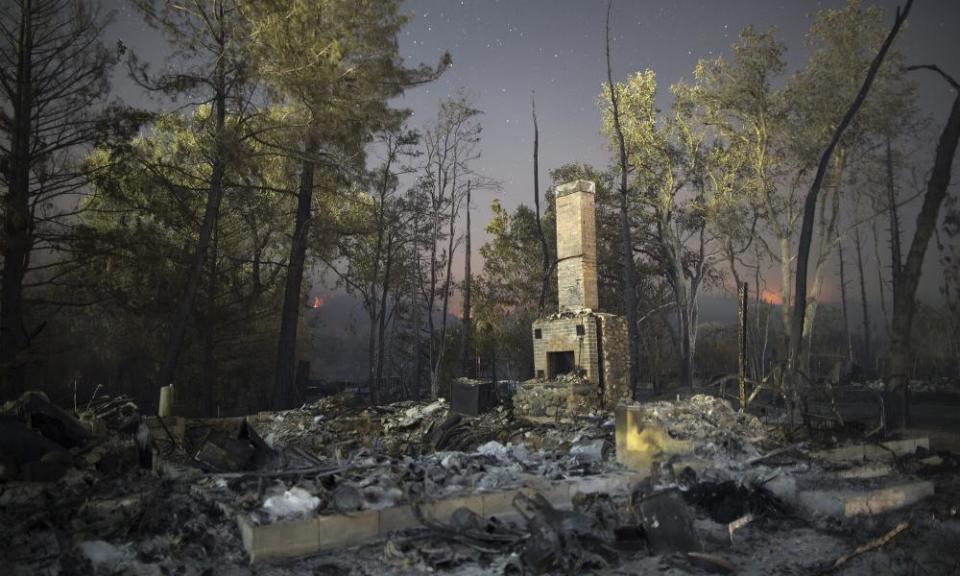Why are ferocious wildfires plaguing southern California?
A combination of short and longer-term events have conspired to spark a ring of fires that have dotted the Los Angeles area
The exhausted firefighters battling fires that have menaced Los Angeles wouldn’t normally expect to be dealing with such ferocious conflagrations with Christmas just a few weeks away.
But a combination of short and longer-term events have conspired to spark a ring of fires that have dotted the LA region, spearheaded by the 96,000-acre Thomas fire that looms over the city of Ventura.
More than 200,000 people in the potential path of fire have been told to evacuate, with more than 300 homes and other buildings already destroyed, hundreds of schools shut down and the 101 freeway closed off. The singer Lionel Ritchie had to cancel a concert to help family members flee the flames. Plumes of smoke have extended more than 1,000 miles into the Pacific.
So why are such unusually strong fires plaguing southern California?

Unhelpful conditions
Before the current spate of fires, Cal Fire had already called 2017 a “very difficult and trying year” for the state, most notably marked by the fires that tore through Napa Valley in October, killing 22 people and damaging more than 5,600 buildings.
Unseasonably warm weather in southern California – April until September was the warmest on record – combined with extremely sparse rainfall in the Los Angeles area to create prime wildfire conditions. The dry Santa Ana winds, reaching 70mph in places, have helped spread the flames at an extraordinary rate – the Thomas fire grew at around an acre per second as it developed and is still nowhere near contained.
Plenty of fuel
The seeds of the current fires were planted nearly a year ago when a warm weather system flowed in from Hawaii and deluged much of California in weeks of rain, breaking the hold of the state’s worst drought on record.
The rains mainly came in the north of the state, replenishing key reservoirs, but the south also had a very wet winter. This spurred growth of combustible shrubs and trees that then became kindling dry during a warm summer and autumn – three weather stations surrounding LA recorded their hottest ever November.
This created plenty of fuel for the fires. Natural forces aren’t causing more wildfires to initially spark – the vast majority of fires are started deliberately or inadvertently by humans – but once they take hold they have plenty to nourish them.

Climate change influence
The exact role of climate change upon 2017 wildfires in California is still the subject of some discussion among scientists. But it’s clear that this year, nationally, has been a big one for fire – more than 9.2m acres have burned so far in 2017, already far in excess of the 6m acre average established over the past decade. About half a million acres in California have combusted.
The national bill for wildfire damage in 2017 stands at around $10bn and it’s likely that the threat to property, as well as life, will grow in the future due to climate change. The fire season has lengthened and caused increasing amounts of land to be chewed up in recent decades. A study published last year found that the total area burned in the western US over the past 33 years was double the size it would have been without any human-caused warming.
The warming temperatures dry out vegetation that then becomes more flammable. And once large areas burn, they release carbon that feeds further warming. With huge mega droughts expected in the future in California, huge fires could well accompany the hanging of tinsel and arrival of Santa Claus on a regular basis for people in the state in the decades ahead.

